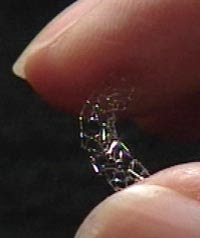Fajadet, Jean at el. Circulation: Journal of the American Heart Association. “Randomized, Double-Blind, Multicenter Study of the Endeavor Zotarolimus-Eluting Phosphorylcholine-Encapsulated Stent for Treatment of Native Coronary Artery Lesions” Aug 14, 2006
<http://circ.ahajournals.org/cgi/reprint/114/8/798>
Like previous postings, this article further examines different types of stents by trying to solve the continuous problems of thrombosis and restenosis following the stenting procedure. This particular study, published in Circulation in August of 2006, examines the Endeavour Zotarolimus eluting stent. Precious posts examined studies with drugs such as paclitaxel and sirolimus eluting stents while this one examines zotarolimus. This clinical study, like the others, compares a drug eluting stent to the bare metal stent. However, this study was more comprehensive in the sense that there were 1,200 patients involved (about 600 with the bare metal stent and 600 with the drug eluting stent).
The study found that there were significant differences between bare metal stents and this new drug eluting stent. For example, within 9 months, there was 15.1% vessel failure in the bare metal stents compared to the 7.9% with the zotarolimus eluting stent. Similarly, there was a 14.4% major cardiac event occurrence with the bare metal compared to 7.3% with the drug eluting stent. In addition, there was 0.5% thrombosis, or clotting with the drug eluting stent compared to 1.2% with the bare metal stent.


No comments:
Post a Comment